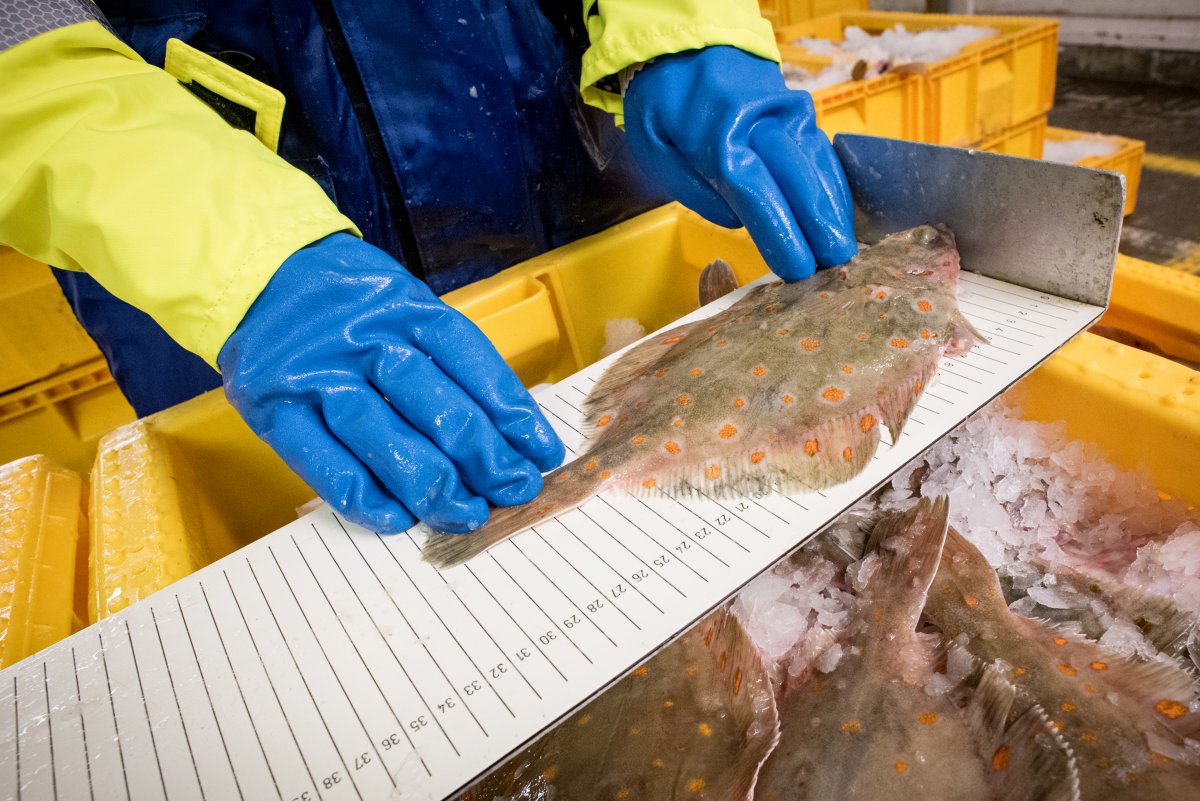NAFC Fisheries Scientists’ Busy Year
More than 55,000 fish and shellfish were measured at sea and on shore by scientists from the NAFC Marine Centre UHI during 2018. The work, carried out as part of the Centre’s ongoing fish and shellfish data collection programmes, provides valuable information to support the local seafood industry.
NAFC staff recorded biological data, including size and sex, from 7,500 velvet crabs during trips on local shellfish fishing boats and during an extended survey by the Centre’s research vessel Atlantia II, and from 3,200 edible (or brown) crabs at sea and at the Shetland Crab Ltd’s factory at Ronas Voe. Two thousand lobsters were also measured at sea or while being landed to ‘vivier’ trucks for live transport to continental markets.
More than 22,500 king scallops were measured and aged, by counting the annual rings in their shells; 10,000 at sea on fishing boats and 12,500 at local processing factories. The proportions of scallops of different ages and sizes vary around Shetland, both from place to place and over time, so this information allows the fishery to be monitored and managed at a local scale. NAFC scientists also carried out a scallop survey using the Atlantia II to investigate what other species are caught in the fishery around Shetland.
Dr Beth Mouat, NAFC’s Joint Head of Marine Science and Technology, explained that: “The shellfish data collected by NAFC staff with the assistance of local industry allow us to assess the state of local shellfish stocks and provide management advice to the Shetland Shellfish Management Organisation (SSMO). This is invaluable for ensuring the long-term sustainability of these important local fisheries and for maintaining the sustainability accreditation of the Shetland scallop and edible crab fisheries by the Marine Stewardship Council (MSC).”
The shellfish sampling programme was only part of the work undertaken by the Fisheries Team within NAFC’s Marine Science & Technology Department during what was a busy and successful year.
More than 20,000 fish were measured during the Centre’s annual Inshore and Shallow Water Fish Survey, also carried out by the Atlantia II. These surveys document the abundance of different species of fish in the waters around Shetland, many of them of commercial importance to local fishermen, and provide information on how stocks have varied from year to year. Results from the 2018 survey showed a large increase in the numbers of juvenile haddock and whiting around Shetland which bodes well for the future local fisheries for these species.
NAFC staff also made visits to local fish markets and to the Pelagia Shetland factory in Lerwick to sample landings of whitefish, mackerel and herring on behalf of Marine Scotland Science. The information collected through these sampling programmes is used by Marine Scotland Science, together with similar information from other parts of the country, to contribute to the assessment and management of commercial fish stocks.
NAFC Fisheries Technician Mark Hamilton, who oversees much of NAFC’s sampling work, said that “The NAFC Marine Centre very much appreciates the cooperation and assistance that my colleagues and I receive from local fishermen and processors. It would be impossible for us to collect the information that we do if it were not for the fishermen who are willing to take us out on their boats and for the access that we are allowed to local processing factories and fish markets. We aim to maintain the current level of data collection during 2019 and look forward to continuing to work closely with the Shetland seafood industry throughout the year.”
The latest report on the Shetland Inshore Fish Survey is available at: www.nafc.uhi.ac.uk/research/inshore-fish-survey/.
For further information please contact:
Dr Beth Mouat (beth.mouat@uhi.ac.uk, 01595 772000) or
Dr Chevonne Angus (chevonne.angus@uhi.ac.uk, 01595 772000).
